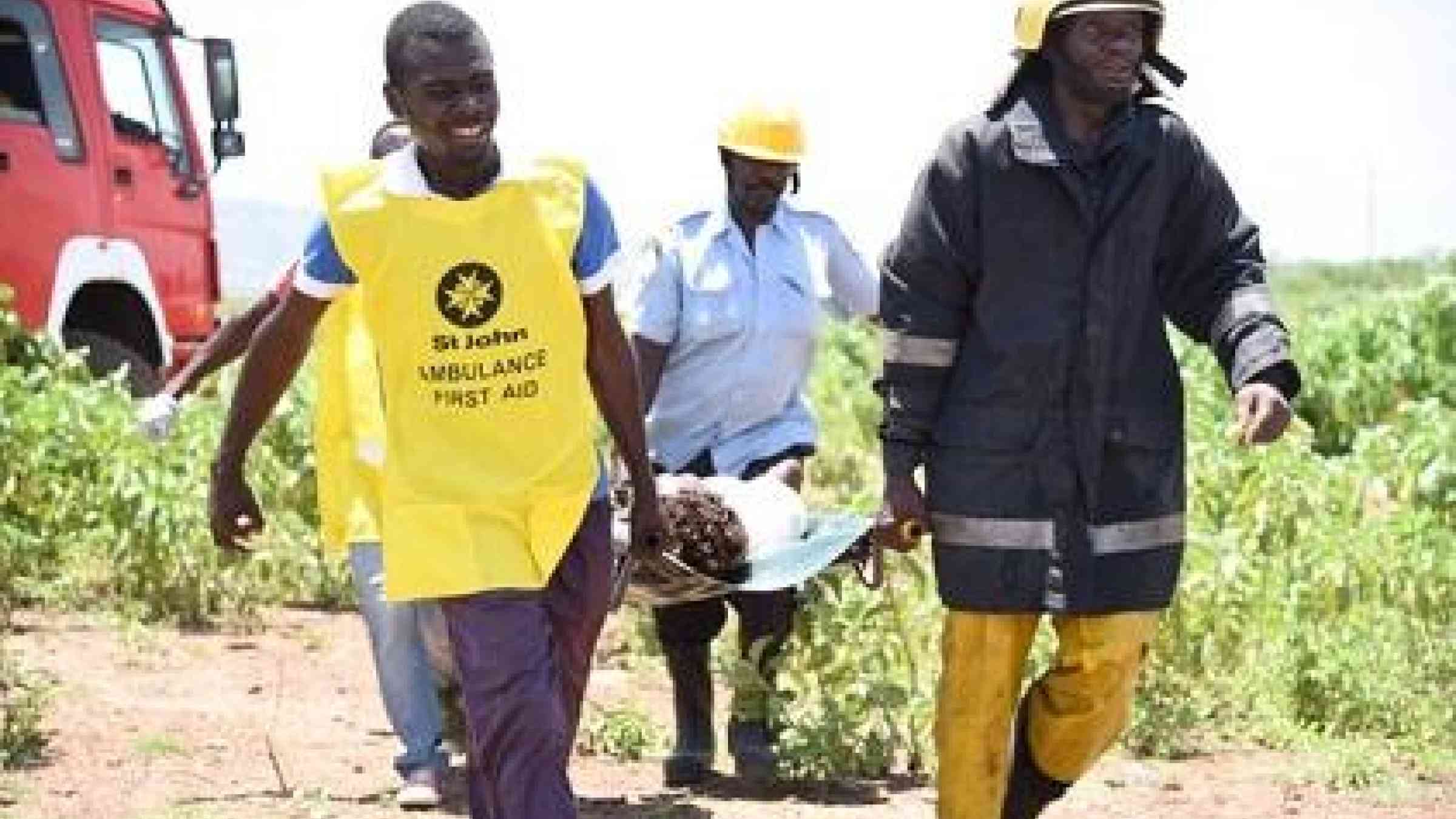Kenyan city pilots Sendai risk monitoring

KISUMU, Kenya, 29 April 2016 – The Kenyan city of Kisumu is pioneering local-level implementation of the Sendai Framework for Disaster Risk Reduction in Africa, underlining its determination to find sustainable solutions to the challenge of rapid urbanization and a changing climate.
Kenya’s third-largest city has just wrapped up Africa’s first-ever pilot of the indicators that will help local governments assess the success of the Sendai Framework, a 15-year agreement adopted by the international community in March last year to curb the impact of natural and man-made hazards.
Kisumu, which has a population of approximately one million, borders Lake Victoria, the largest stretch of inland water in Africa. That strategic location means that Kisumu is a growing hub, with its main economic drivers being agriculture, manufacturing, and tourism.
Kisumu has experienced disasters increasing in frequency and intensity, from structural collapses, floods, fires and maritime accidents. The largest of the latter was the 1996 MV Bukoba ferry sinking, which cost up to 1,000 lives, making it one of Africa's worst maritime disasters.
With rapid urbanization, the exposure of persons and assets is increasing, thus generating new risks and a rise in disaster-related losses.
The local authorities are keenly aware of the importance of tackling risk.
“It is always more costly to respond to than to mitigate disasters,” said Mr. Eric Odida, Kisumu County’s Director of Special Programmes and Chief of Staff, at a workshop held as part of the pilot. He underlined the commitment of Governor Jack Ranguma to disaster risk reduction through planned allocation of dedicated budget.
In 2010, Kisumu prioritized disaster risk reduction by joining UNISDR’s global Making Cities Resilient Campaign, which now boasts of more than 3,000 members worldwide. The campaign recently updated its “Ten Essentials”, a series of tests of city resilience, and Kisumu is preparing to implement them.
One of the seven targets of the Sendai Framework is to substantially increase the number of countries with national and local disaster risk reduction strategies by 2020. The Sendai Framework also calls for the empowerment of local authorities and local communities to reduce disaster risk, including through resources, incentives and decision-making responsibilities, as appropriate.
The Sendai Framework’s layered set of indicators, which are currently being firmed up, are designed to assist local authorities in assessing their current and future needs and capacities, define strategies and common goals, and identify policies and interventions that would improve the city’s resilience.
Since joining the Making Cities Resilient Campaign, Kisumu has been able to enhance the capacity of its staff and stakeholders such as civil society organizations, youth groups and the private sector, in disaster risk reduction, with support from UNISDR. One method has been by using the Local Government Self-Assessment Tool, a planning and stocktaking system that brings various stakeholders together to boost resilience.
Kisumu’s involvement in regional and global dialogues on disaster risk reduction has seen the attention of peers, development partners and private sector alike drawn to the city, such as the Lake Basin Development Project.
“I commend Kisumu for the effort so far and urge stakeholders to accelerate the synergy, in order to strengthen the solutions and help the city achieve the targets of the Sendai Framework,” said Mr. Animesh Kumar of UNISDR’s Regional Office for Africa.
Workshop participants reiterated the timeliness of the pilot, saying that it helped unearth critical issues that need urgent attention for the city to achieve the targets of Sendai Framework.
The recent enactment of the Kisumu County Disaster Management Act tops the list of some instrumental achievements in Kisumu’s journey to resilience. There has also been an increase in multi-stakeholder engagement, which has seen increased involvement of the private sector and civil society.
Disaster risk reduction is anchored in the Governor’s office with a budgetary allocation, and rehabilitation and maintenance of storm water drainage is routinely undertaken. Rescue centers in flood-prone areas have been set up and integration of an eco-school programme, basic first aid skills, and sustainable development education have been made part of the school curriculum.